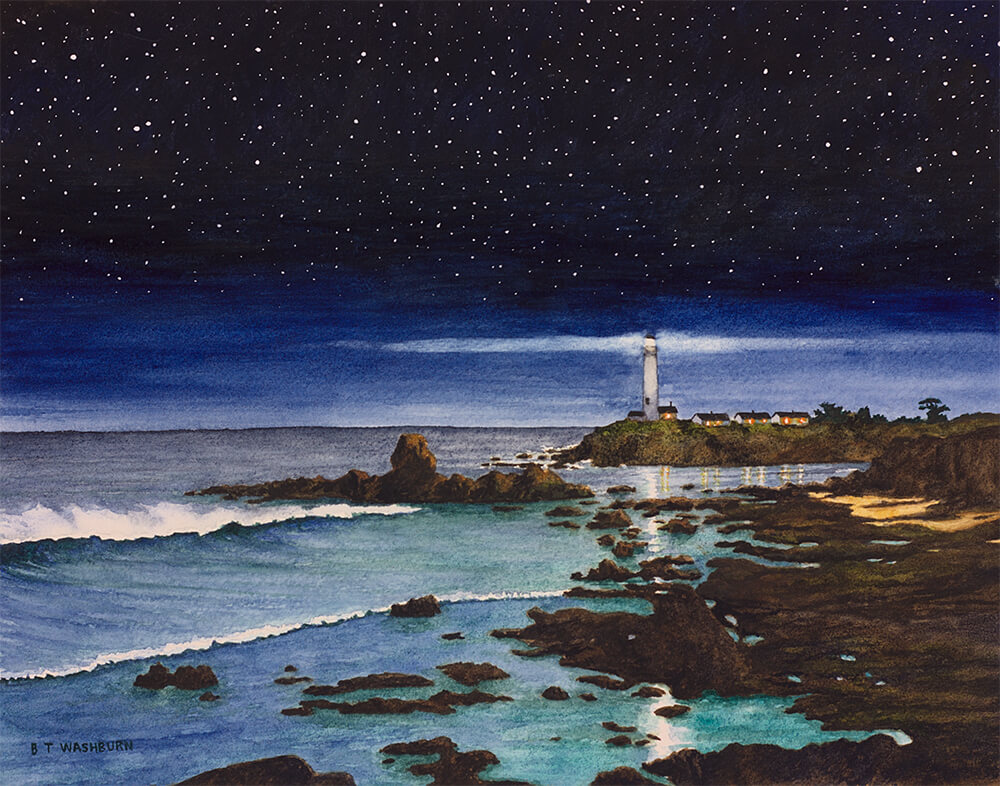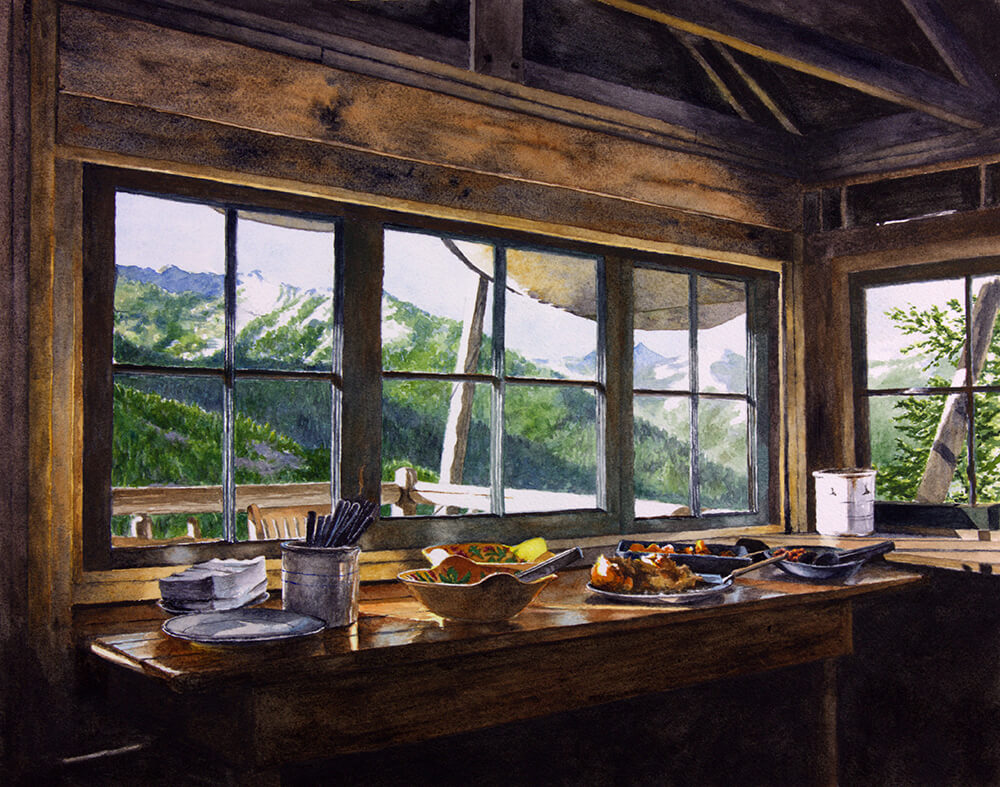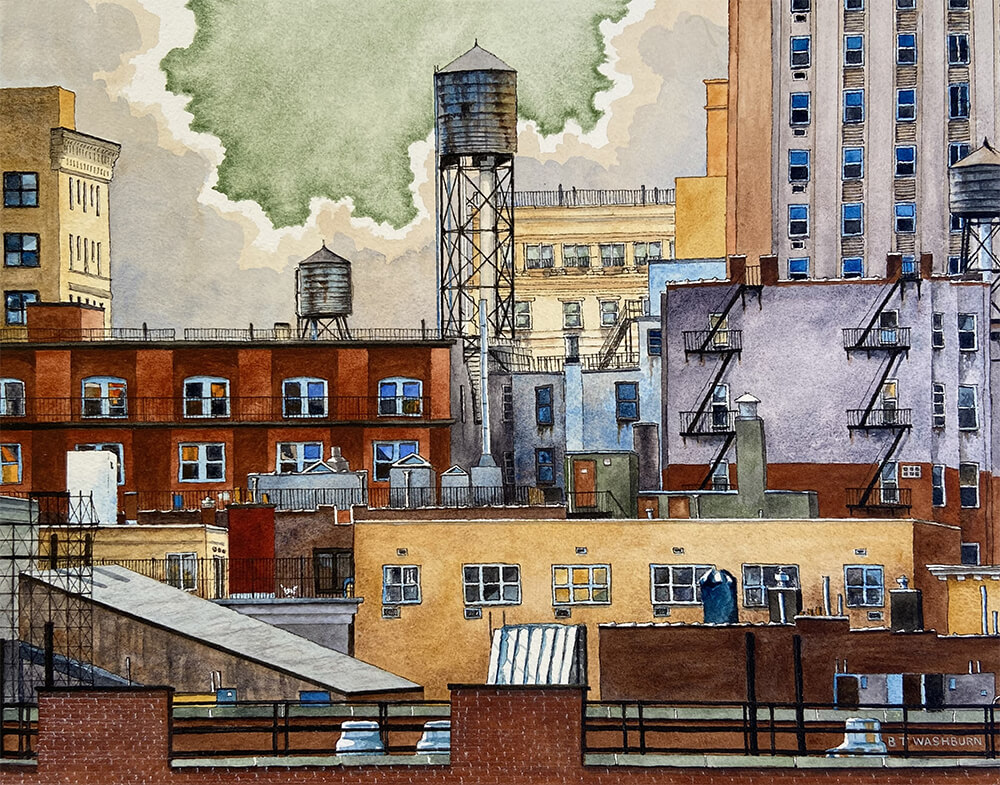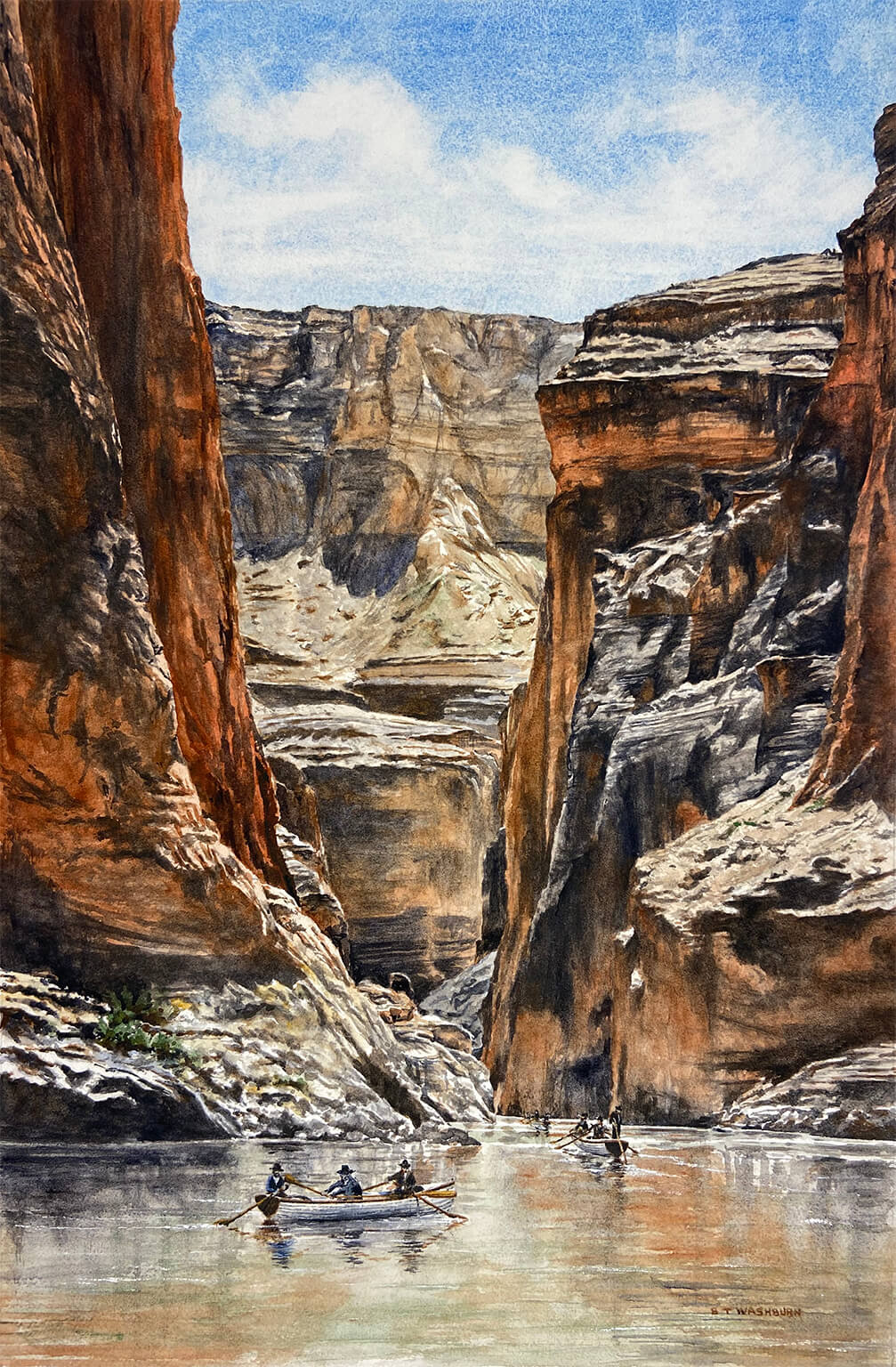Words by Jennifer Jory
When it comes to watercolors, new art needs to be nurtured. “With this medium, it’s challenging and there is no undo button,” explains Belmont artist Bruce Washburn, who brings Peninsula and coastal landscapes to life with his precise brushstrokes. “I have to think ahead and plan the work. You have to let watercolors dry while in process and it forces you to take time to consider your options.” He adds with a smile, “I should do this more in life—wait for things to dry, and pause.”
Through his art, Bruce brings brilliant landscapes right to our doorstep. “We get to live in such a magical place,” he marvels. From San Mateo County to Yosemite and beyond, Bruce paints with a realistic and detailed style uncharacteristic of many watercolor artists. “I want to be a witness to history and I am painting natural sites that might be under pressure,” he says.

Bruce records Bay Area treasures in his growing collection of local scenes. Recently, his work caught the attention of the San Mateo County Parks Foundation, which commissioned him and two other artists to create a commemorative poster for its 25th anniversary and the 100th anniversary of the county park system. Bruce’s poster features Redwood City’s Edgewood Park and draws viewers into an idyllic scene of native lupine, poppies, butterflies and deer. Bruce generously employs rich colors to illuminate the trails, flora and fauna from every season in a single composition. “This is a key location for me on the Peninsula,” confides Bruce. “My routine was to come home from work and go running in Edgewood Park.”

Coastal sites that capture Bruce’s imagination include Pigeon Point Lighthouse in Pescadero and a 19th-century stagecoach stop in San Gregorio that, according to oral history, served as a roadhouse and music venue in the 1930s and ‘40s. “It captivates me,” he says. “I am drawn to structures that might deserve some more recognition.” Bruce also paints scenes from Big Basin National Park, Stage Road near Pescadero and Red’s Coffee House in San Francisco, to name a few. “I want to honor the places that are significant to all of us who live here and to the people who inhabited these places before,” he says.
As a student at UCLA, Bruce majored in atmospheric physics. But his artistic side prevailed over the sciences and he transferred to Humboldt State University, where he earned a fine arts degree with an emphasis in painting. “I realized I had to give the arts a serious try and see how far I could go with it,” he says. From Humboldt’s instructors, who were often working artists, he learned the lifestyle compromises he would need to make as a painter and pivoted to a career in library systems and then technology. “As a software engineer, you have all kinds of tools to measure your work, and they are mostly objective,” he reasons. “With painting, a lot of the reaction is subjective or emotional and depends on the chord you strike with the viewer.”

Now retired from his technology career, painting is Bruce’s full-time occupation. Though he previously worked with oil paints, currently he exclusively uses watercolor, occasionally adding details in pen and ink. The medium opened up for him when he encountered an exhibit at the De Young Museum: J. M. W. Turner: Painting Set Free. Turner’s work inspired Bruce to experiment and realize the potential of watercolor. It “opened a door for me and all I had to do was walk through it,” Bruce says. Other influences include artist-illustrators Beatrix Potter, N.C. Wyeth and Chris Van Alsburg.
When Bruce begins a piece, he makes a meticulously detailed graphite pencil sketch, which he often draws plein air. “I let the watercolor be a collaborator,” he describes. “If you let it, the watercolor will take your intentions further.”
A painting of the Brooklyn skyline provides a window into Bruce’s artistic lens. This scene, which he captured in a photo while walking across the Brooklyn Bridge, so captivates his imagination that he has painted it nine times. “I envision it in different kinds of lighting,” he explains. “At nighttime, for instance, with the water towers, fire escapes and brickwork lit up. It has become so familiar it almost feels like my neighborhood.”
When reflecting on the difference between painting urban and natural landscapes, Bruce finds that urban subjects require accurately rendered details of the built environment, whereas nature calls for careful consideration of spatial depth like distance and foreground. “When I am painting Yosemite Valley, I think about the epochal-scale forces that shaped that remarkable space over time,” Bruce says. He cites memories of a place playing a strong role in his paintings as well. “It’s a kind of time travel,” he reflects.

As Bruce paints meaningful and historic sites on the Peninsula and beyond, he strives to tell a story. “Something I am working on is adding more narrative associated with a painting,” he notes. Take his depiction of a ship passing beneath the Bay Bridge in the 1930s, a scene similar to what his father might have experienced when returning home from World War II. “I try to come up with a pictorial vocabulary,” Bruce says. “I am striving to make a meaningful connection between my world and the viewer. I want people to see themselves in a location or get a sense of who lives there and bring this to life.”
Bruce Washburn’s artwork has been featured in shows at the Coastal Arts League in Half Moon Bay and Art Guild of Pacifica and will be displayed during Silicon Valley Open Studios this spring. brucewashburnart.com


